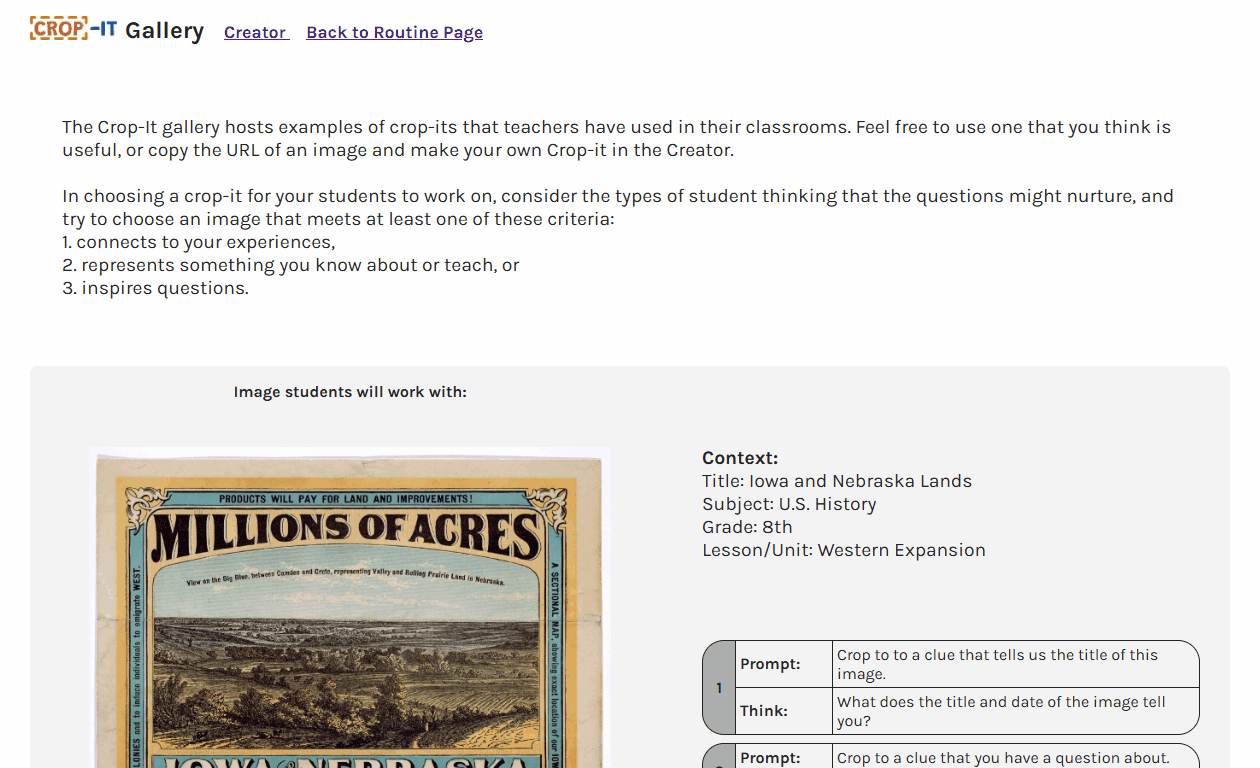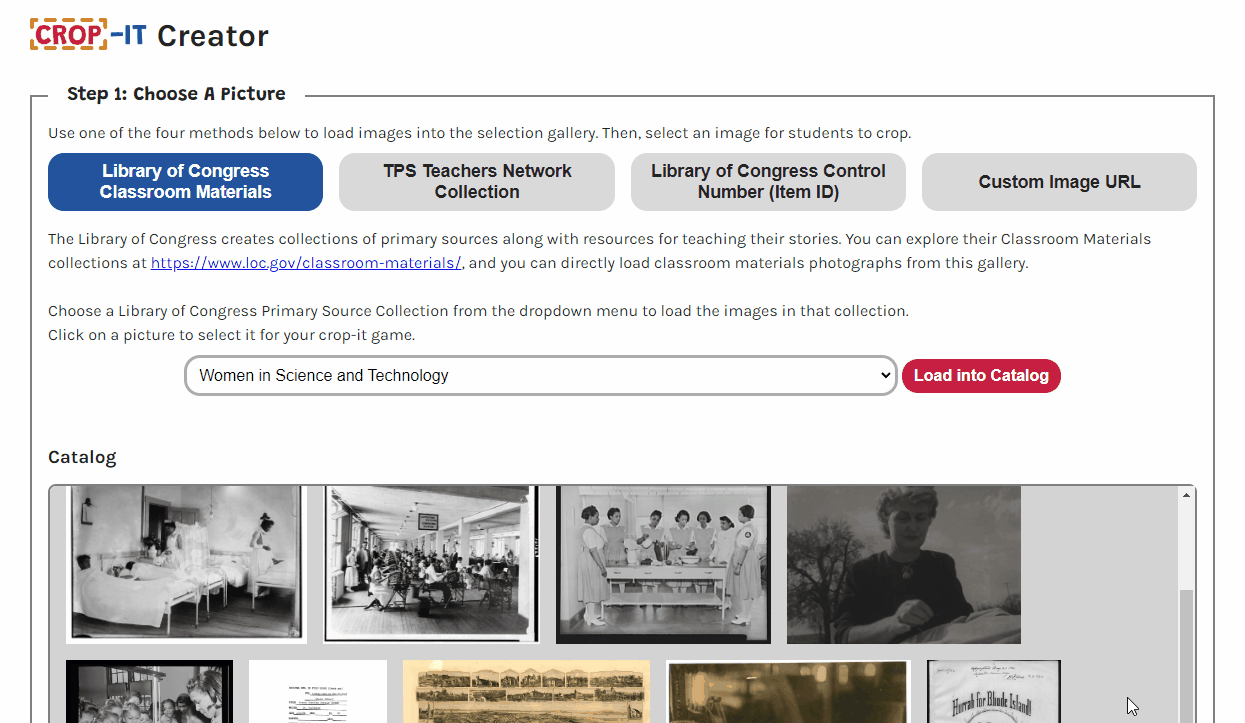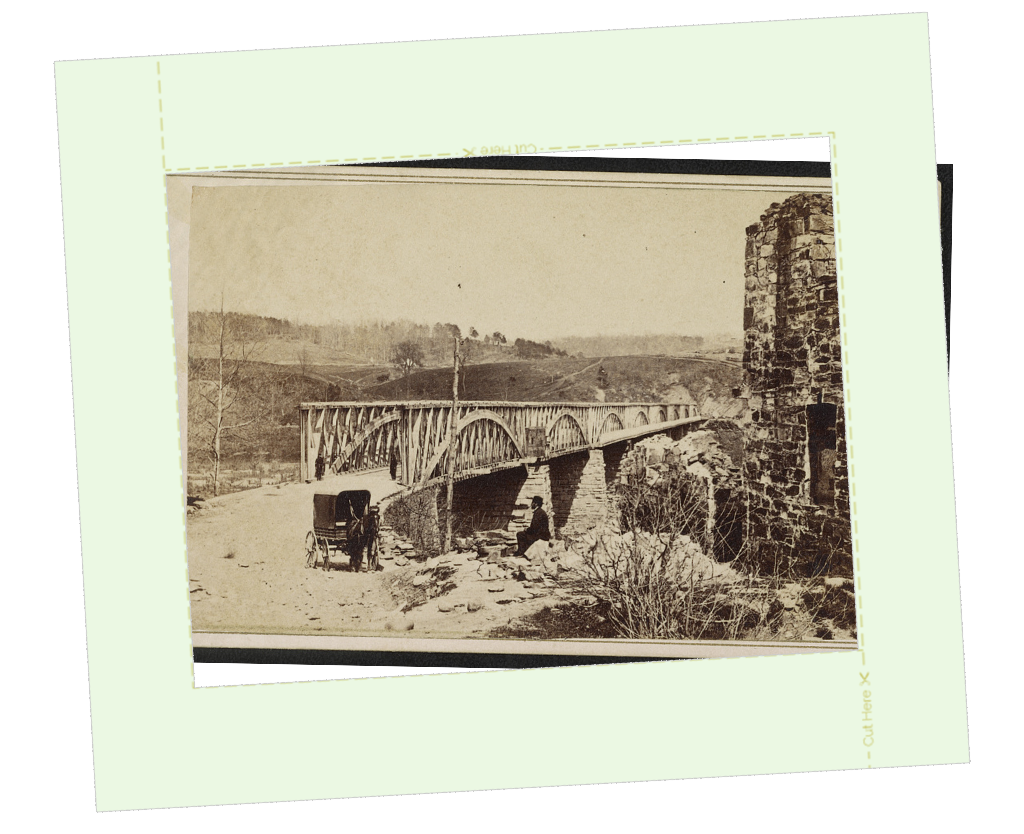
In our fast-paced lives, we make sense of thousands of images in just a short glance. Crop-It slows the sense-making process down to provide time for students to think. Through Crop-It, learners build strategies to seek evidence, multiple viewpoints, and a deeper, more detailed, understanding before determining the meaning of a visual source. Teachers develop skills in posing questions that nurture deeper thinking.
Use any of the pre-existing Crop-It activities in the gallery for inspiration or as a jumping point for your own activities.

Design Your Own Crop-It Activity
Share URL to your own Crop-It with students. Students print PDF files of their responses for teacher or peer review.


The Crop-It routine helps learners look carefully at a primary source to focus on details and visual information and then use these observations to generate and support ideas. Students use evidence from their “crops” to build an interpretation or make a claim. Crop-It can be completed as part of a lesson, and can be used with different kinds of visual sources (for example cropping a work of art, a poem, or a page from a textbook).
Our Crop-It tool streamlines and digitizes this routine and provides easy access to collections of Library of Congress primary sources curated for teachers and students. If you’d like to learn more about Crop-It or create a paper-based Crop-It routine for your classroom, visit Teaching History.
Learn more about how to teach with historical sources through the Library of Congress Teaching with Primary Sources program and community for educators. Download the free Primary Source Learning Routines Booklet.
Crop It is useful for both teachers and students. Crop It focuses teacher attention on asking questions that prompt critical and creative student thinking. Asking questions is one of the 8 Essential Teaching Skills. Routines, such as Questions Only, Images Draw You In, and 2 x 2 x 2 all focus on using questions as levers for student learning. You may also be interested in the routine, Zoom-In.
Image Credits
Credits for Images used in Crop It image on agileteacherlab.org front page
Johnston, F. B., photographer. (1899) Group of young women performing atmospheric pressure experiments while studying science in normal school, Washington, D.C. Washington D.C, 1899. [?] [Photograph] Retrieved from the Library of Congress, https://www.loc.gov/item/90711152/.
Lincoln, A. (1860) Abraham Lincoln papers: Series 3. General Correspondence. 1837 to 1897: Abraham Lincoln to Mary Todd Lincoln, Sunday, Report from Exeter, New Hampshire. March 4. [Manuscript/Mixed Material] Retrieved from the Library of Congress, https://www.loc.gov/item/mal4340100/.
Barker, G., photographer. (ca. 1889) The Johnstown calamity. A slightly damaged house. Pennsylvania Johnstown Cambria County, ca. 1889. [Photograph] Retrieved from the Library of Congress, https://www.loc.gov/item/2005691635/.
Pictograph at the side of the mural at the San Diego Exposition. San Diego California United States San Diego County, 1936. May. [Photograph] Retrieved from the Library of Congress, https://www.loc.gov/item/2017765214/.
Brady’S National Photographic Portrait Galleries, photographer. Chain Bridge / Brady’s National Photographic Portrait Galleries, Broadway & Tenth Street, New York & No. 352 Pennsylvania Av., Washington, D.C. Washington D.C. Virginia Arlington United States, None. [New york ; washington, d.c.: brady’s national photographic portrait galleries, broadway & tenth street ; no. 352 pennsylvania av., between 1861 and 1865] [Photograph] Retrieved from the Library of Congress, https://www.loc.gov/item/2016651685/.

Crop It was developed through the grant, Teaching Language and Literacy as an Act of Resistance, funded through Library of Congress Teaching with Primary Sources program. Content created and featured in partnership with the TPS program does not indicate an endorsement by the Library of Congress.

